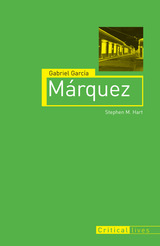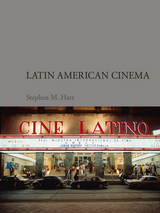
Through case studies of grassroots movements—particularly the economic justice work carried on by congregation-based community organizing and the pursuit of human rights by local members of Amnesty International—Hart shows how these groups develop distinctive ways of talking about politics and create characteristic stories, ceremonies, and practices. According to Hart, the way people engage in politics matters just as much as the content of their ideas: when activists make the moral basis for their activism clear, engage issues with passion, and articulate a unified social vision, they challenge the recent ascendancy of conservative discourse.
On the basis of these case studies, Hart addresses currently debated topics such as individualism in America and whether strains of political thought strongly informed by religion and moral values are compatible with tolerance and liberty.

“Many years later, as he faced the firing squad, Colonel Aureliano Buendía was to remember that distant afternoon when his father took him to discover ice.” Thus begins Nobel Prize winner Gabriel García Márquez’s One Hundred Years of Solitude, one of the twentieth century’s most lauded works of fiction. In Gabriel García Márquez, literary scholar Stephen M. Hart provides a succinct yet thorough look into García Márquez’s life and the political struggles of Latin America that have influenced his work, from Love in the Time of Cholera to Memories of My Melancholy Whores.
By interviewing García Márquez’s family in Cuba, Hart was able to gain a unique perspective on his use of “creative false memory,” providing new insight into the magical realism that dominates García Márquez’s oeuvre. Using these interviews and his original research, Hart defines five ingredients that are critical to García Márquez’s work: magical realism, a shortened and broken portrayal of time, punchy one-liners, dark and absurd humor, and political allegory. These elements, as described by Hart, illuminate the extraordinary allure of García Márquez’s work and provide fascinating insight into his approach to writing. Hart also explores the divisions between García Márquez’s everyday life and his life as a writer, and the connection in his work between family history and national history.
Gabriel García Márquez presents an original portrait of this well-renowned writer and is a must-read for fans of his work as well as those interested in magical realism, Latin American fiction, and modern literature.

Describing the broad contours of Latin American film and its connections to major historical developments, Hart guides readers through the story of how Hollywood dominance succumbed to the emergence of the Nuevo Cine Latinoamericano and how this movement has led to the “New” New Latin American Cinema of the twenty-first century. He offers a fresh analysis of the effects of major changes in film technology, revealing how paradigm shifts such as the move to digital preceded new cinematographic techniques and visions. He also looks closely at the films themselves, examining how filmmakers express their messages. Finally, he considers the decision by a group of directors to film in English, which enhanced the visibility of Latin American cinema around the world. Featuring 120 illustrations, this clear, cogent guide to the history of this region’s cinema will appeal to fans of Central Station and Like Water for Chocolate alike.
READERS
Browse our collection.
PUBLISHERS
See BiblioVault's publisher services.
STUDENT SERVICES
Files for college accessibility offices.
UChicago Accessibility Resources
home | accessibility | search | about | contact us
BiblioVault ® 2001 - 2024
The University of Chicago Press









